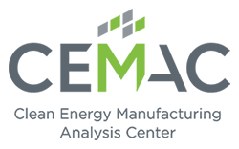Clean Energy and Manufacturing for Society: Notes from the 2016 STS Forum
October 25, 2016
By Jill Engel-Cox, Ph.D., CEMAC Director
This month, I had the great honor to participate in the 2016 Science and Technology in Society (STS) Forum in Kyoto, Japan, where experts from across the globe engaged in discussion on energy, health, information technology, and engineering. The annual event aims to provide a forum for open discussions and to build a global human network that can resolve emerging societal problems through the application of science and new technologies. On behalf of CEMAC, I had the opportunity to present and facilitate a discussion at a session on new and renewable energy, where I shared CEMAC's analysis about advanced manufacturing and its important role in advancing the clean energy economy.
Deployment of clean energy technologies is growing at an exponential rate and the installation of clean energy technologies is being driven by a rapid decline in prices for such technologies. I propose that there are three drivers for these cost reductions: technology development, policy incentives, and advanced manufacturing.
"We are not only in the midst of a clean energy revolution, but we are seeing revolutionary changes in the manufacturing that produces clean energy technologies."
The first two are well-known. Extensive technology research and development efforts have led to increasing efficiency levels of PV solar cells. Wind turbines have been engineered to be taller, with more efficient blade designs, raising their operational capacity factor from 25% to as high as 50%. In addition to technology developments, policy incentives such as renewable portfolio standards and financial incentives have enabled early adopters to install new systems at scale, when they were not initially competitive with traditional energy industries. These policy incentives have made it possible to drive advancements in manufacturing, which has resulted in many clean energy technologies becoming competitive in the global marketplace without incentives, as evidenced by record low prices in international energy auctions this year (as low as around US$30/MWh).
These advances in manufacturing are a key element of recent progress in reducing the cost and advancing deployment of clean energy technologies. Automated and continuous processes are increasingly used for clean technology manufacturing, enabling economies of manufacturing at large scales. For example, while solar silicon PV cell efficiencies in the lab peaked over a decade ago, panel prices per watt have declined 85% due to manufacturing advancements like automated and continuous manufacturing, improved wafer cutting processes that reduce the amount of materials used and less wasted, and contact designs that put all the electrical contacts on the back, so there is a larger area on the front exposed to the sun.
Manufacturing wind turbines has changed as well, including automated processes to make blades and turbines, reduced production time to make a blade by almost 40% (from 38 to 24 hours), and simplified gear box design for greater ease in manufacturing, which has resulted in a 65% cost reduction since 2009. Light-emitting diode (LED) prices have also declined 90% since 2008—due to automation, wafer sizing, and new materials.
In addition to advancements in manufacturing, it is important to consider the role of international trade. As seen across many of CEMAC's studies, value chain analysis indicates that the leading manufacturing countries such as the U.S., Japan, Germany, Malaysia, and China are essential to the success of clean technologies. Industry hubs and international commerce help to develop skilled workers, establish supply chains, and further innovation.
We are not only in the midst of a clean energy revolution, but we are seeing revolutionary changes in the manufacturing that produces clean energy technologies. As we look ahead to future clean energy innovation and technology production, it is crucial that we continuously create new dynamic manufacturing processes, in addition to new materials and technologies, while striving for decarbonized and efficient systems in the evolving clean energy economy.

